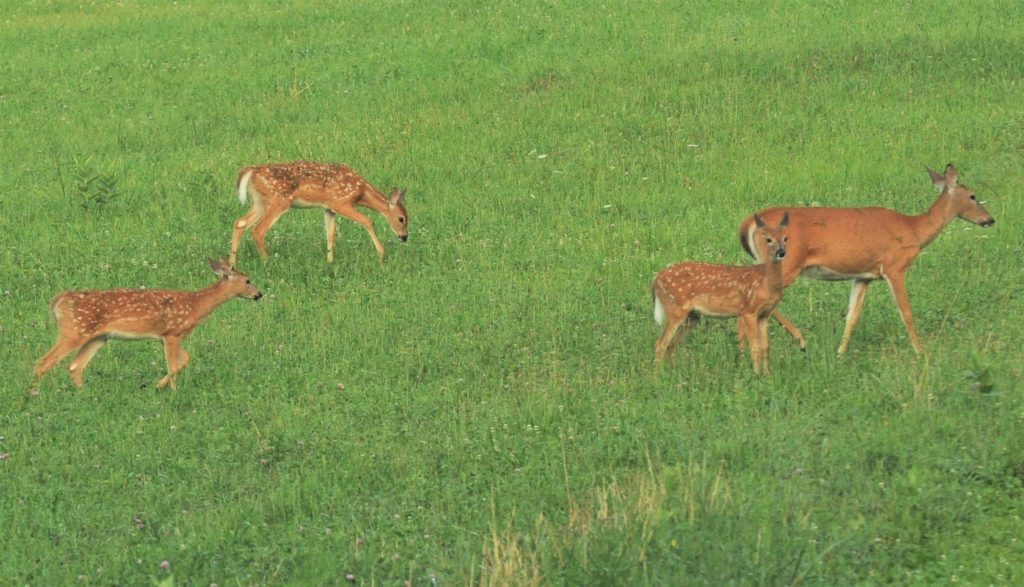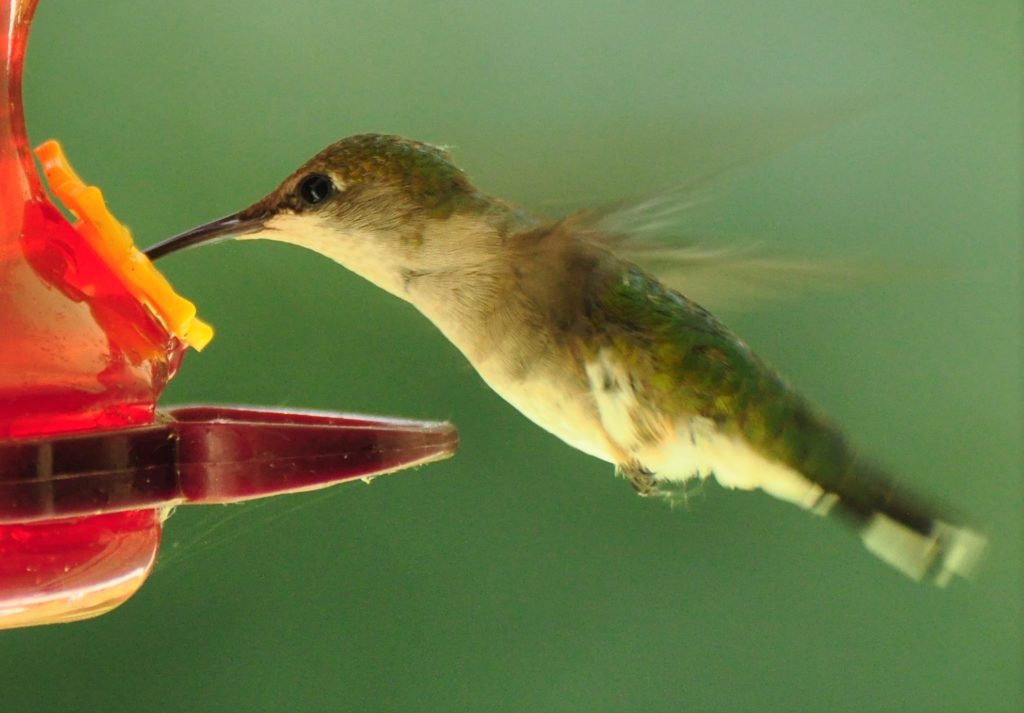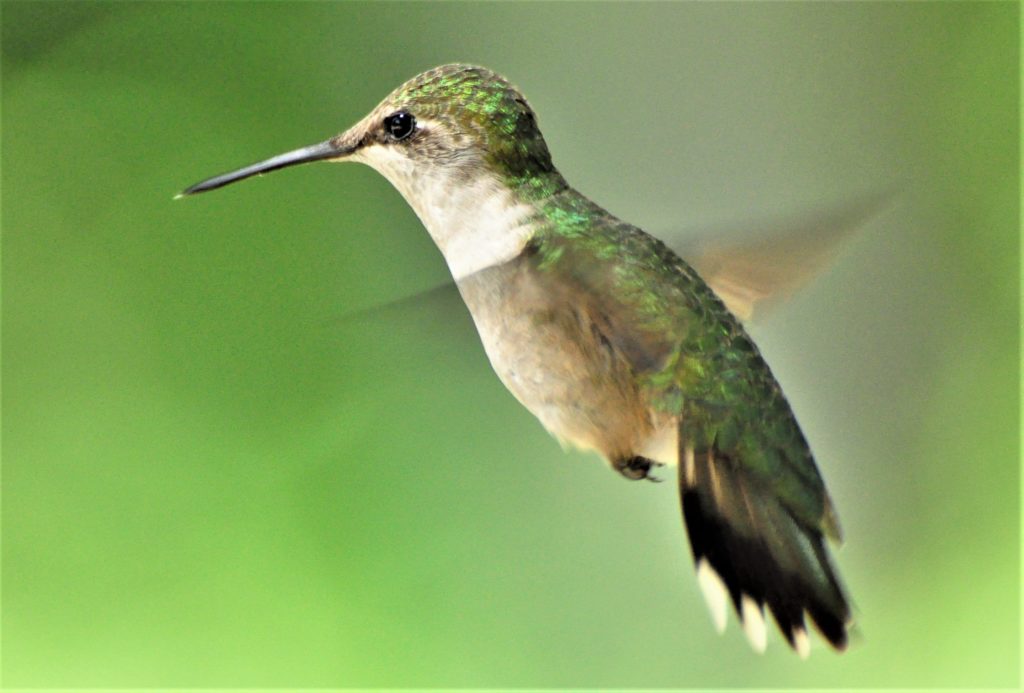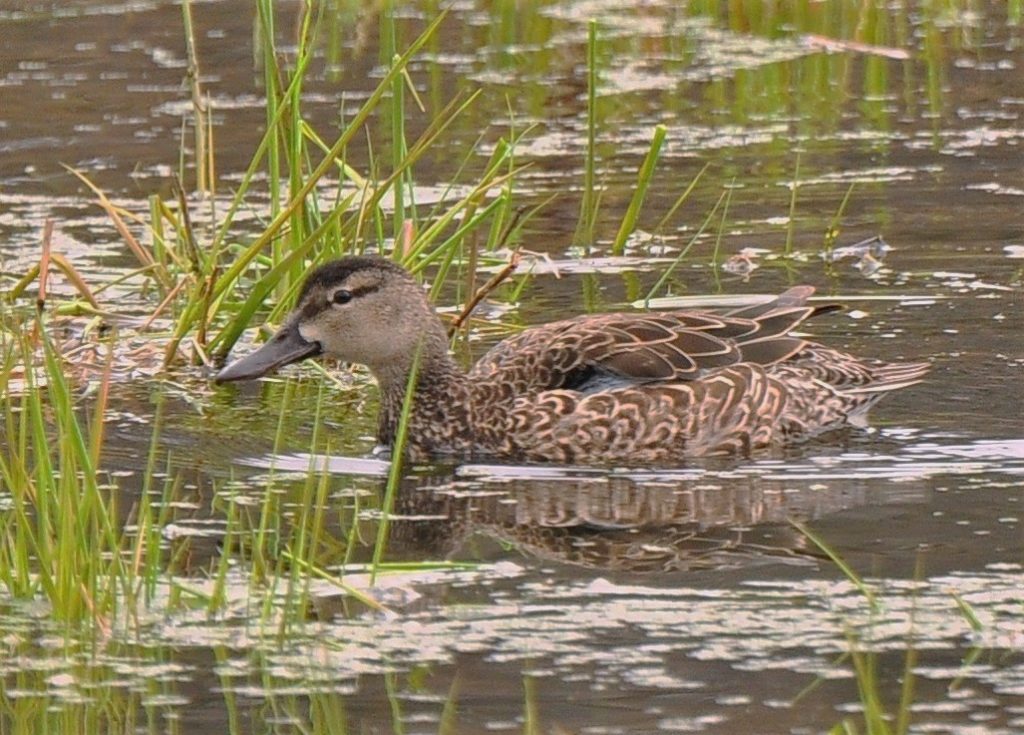Photography courtesy of Lowell Washburn, all rights reserved.
Triplets: Joyce Klunder called the other day. She lives at the west end of Clear Lake in the Ventura Heights and wanted to report that she had just seen a white-tailed deer with fawns near the entrance of the Heights bike trail.
Although seeing a doe with her spotted offspring is always a heart-warming sight, the event usually doesn’t warrant a phone call. It is, in fact, a common sight for those who spend much time poking around in the out-of-doors. But this doe was special. Instead of being followed by one, or even two fawns, this deer was accompanied by a total of three spindle legged youngsters.

Now it’s a well-known fact that Iowa boasts one of the healthiest deer herds to be found anywhere in North America. Supplied with quality year-round food sources, most does give birth to a single fawn each spring. Many does go a step farther and produce twins. Sets of triplets are much rarer, of course. So much so that most folks will never see one.
I’ve only been able to enjoy the thrill of seeing triplet fawns a couple times in my life. My last sighting was in the summer of 2019, ironically at the Ventura Heights — the same spot where Joyce Klunder is reporting her triplet white-tails.
Klunder said that she has spotted the deer on more than one occasion this year. As we narrowed down the exact location of the sightings, I determined that the doe and her fawns were within yards of where I saw and photographed last year’s group of triplets. Although the theory lacks hard evidence, I’d say there is at least a strong circumstantial case that this same doe has produced six fawns at Ventura Heights during the past two summers. Considering our North Iowa winters, it’s a truly amazing feat!
Hummingbirds: Following weeks of warm and dry weather, the second week of September delivered the season’s first blast of northerly winds and dramatically cooler temperatures. In extreme cases, the mercury briefly hovered just a few degrees above freezing.
For ruby-throated hummingbirds, the rapid downturn in temps was a clear signal to head for warmer climes. Although the annual September migration was already underway, the flight quickly escalated into what will be remembered by area birders as a truly remarkable event. The intensity of the migration became most evident at backyard nectar feeders where sudden and impressive gatherings of hummingbirds swarmed like bees.

There was good reason for the birds’ apparent urgency to feed. For a creature weighing less than a quarter of an ounce, long distance migrations present a rigorous challenge. While winging its way to Central America, a hummingbird may consume up to half its weight in nectar [liquid sugar] each day. Backyard feeders save time and conserve energy by providing travel weary migrants with an unlimited quantity of high-octane fuel in one spot. For migrating ruby-throats, feeders are worth their weight in gold.

Migrating from as far north as Ontario, Canada, the most grueling phase of the hummingbird’s annual fall flight begins on the shores of our southern coastline. Guided by starry constellations and powered by wings churning at more than 50 beats per second, hummingbirds leave the Texas mainland and head directly across the Gulf of Mexico. Exhausting stored fuel reserves and pushing physical endurance to the limit; the birds will cross the entire watery expanse in a single nonstop 500-mile, nighttime flight. For a bird with a wingspan of only four inches, the mad dash marathon represents an incredible achievement.
Iowa Teal Season: This year’s special teal season concluded on September 16. And although this year’s harvest surveys are still incomplete, early indications are that the 2020 teal season will go down as one of the best since the special hunts were initiated in 2014. Wildlife biologists noted that a series of well-timed weather fronts caused large numbers of blue-winged teal to migrate into the state during this year’s 16 -day early season.


 Tom Cope
Tom Cope Sue Wilkinson
Sue Wilkinson Susan Judkins Josten
Susan Judkins Josten Rudi Roeslein
Rudi Roeslein Elyssa McFarland
Elyssa McFarland Mark Langgin
Mark Langgin Adam Janke
Adam Janke Joe Henry
Joe Henry Kristin Ashenbrenner
Kristin Ashenbrenner Joe Wilkinson
Joe Wilkinson Dr. Tammy Mildenstein
Dr. Tammy Mildenstein Sean McMahon
Sean McMahon